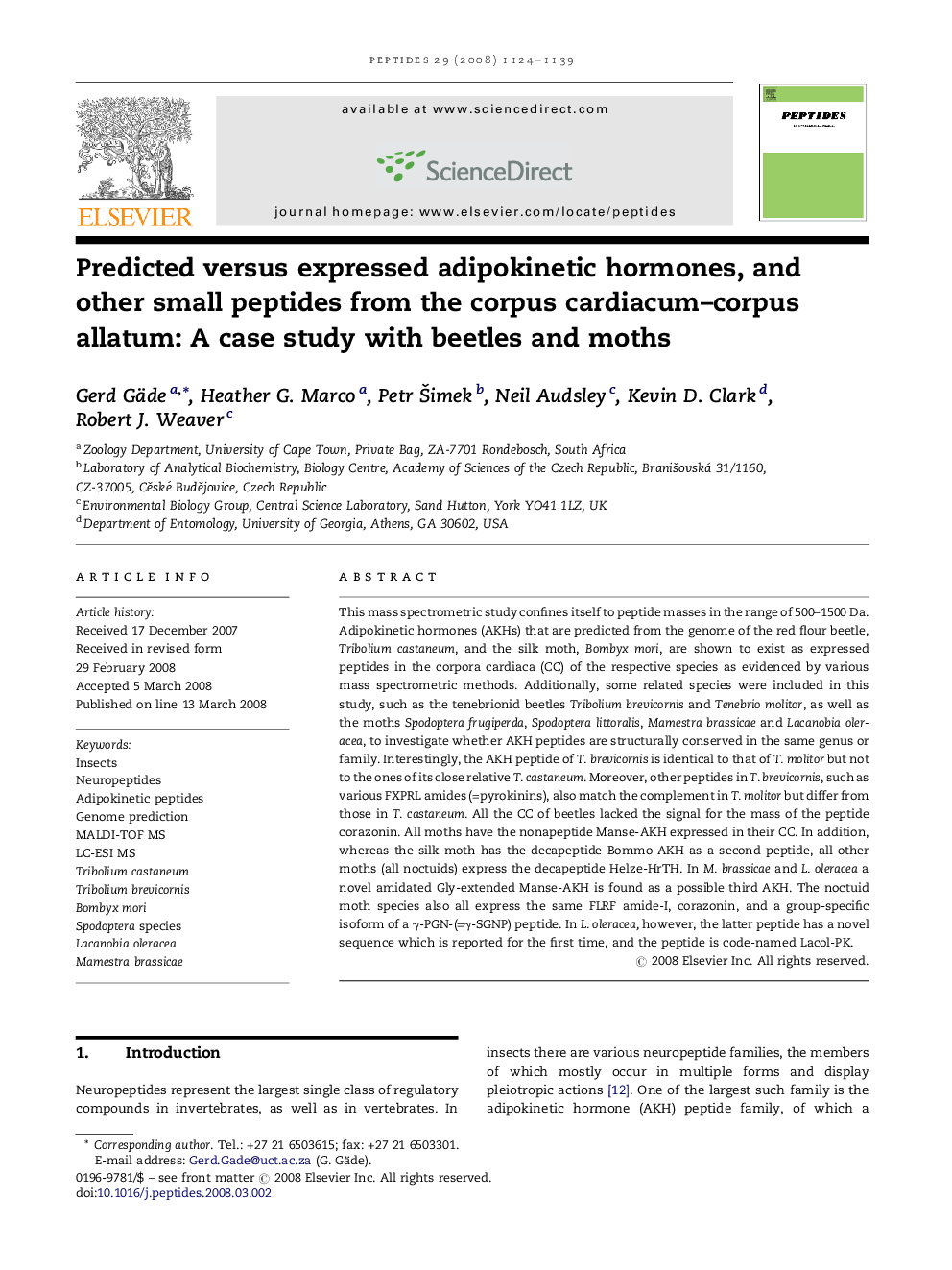| Article ID | Journal | Published Year | Pages | File Type |
|---|---|---|---|---|
| 2006977 | Peptides | 2008 | 16 Pages |
Abstract
This mass spectrometric study confines itself to peptide masses in the range of 500-1500 Da. Adipokinetic hormones (AKHs) that are predicted from the genome of the red flour beetle, Tribolium castaneum, and the silk moth, Bombyx mori, are shown to exist as expressed peptides in the corpora cardiaca (CC) of the respective species as evidenced by various mass spectrometric methods. Additionally, some related species were included in this study, such as the tenebrionid beetles Tribolium brevicornis and Tenebrio molitor, as well as the moths Spodoptera frugiperda, Spodoptera littoralis, Mamestra brassicae and Lacanobia oleracea, to investigate whether AKH peptides are structurally conserved in the same genus or family. Interestingly, the AKH peptide of T. brevicornis is identical to that of T. molitor but not to the ones of its close relative T. castaneum. Moreover, other peptides in T. brevicornis, such as various FXPRL amides (=pyrokinins), also match the complement in T. molitor but differ from those in T. castaneum. All the CC of beetles lacked the signal for the mass of the peptide corazonin. All moths have the nonapeptide Manse-AKH expressed in their CC. In addition, whereas the silk moth has the decapeptide Bommo-AKH as a second peptide, all other moths (all noctuids) express the decapeptide Helze-HrTH. In M. brassicae and L. oleracea a novel amidated Gly-extended Manse-AKH is found as a possible third AKH. The noctuid moth species also all express the same FLRF amide-I, corazonin, and a group-specific isoform of a γ-PGN-(=γ-SGNP) peptide. In L. oleracea, however, the latter peptide has a novel sequence which is reported for the first time, and the peptide is code-named Lacol-PK.
Keywords
TOFManduca sextaTenebrio molitorPBANNVPMelolontha melolonthaMamestra brassicaeAnopheles gambiaePeriplaneta americanaSpodoptera littoralisSpodoptera frugiperdaPyrokininTFAPSDHeliothis zeatBMELeucophaea maderaeLacanobia oleraceaESICAP2bCIDPyrrhocoris apterusPyrokininsMyosuppressinMS/MSSchistocerca gregariaAKHCollision-induced dissociationTrifluoroacetic acidcorpora allatamatrix-assisted laser desorption/ionizationInsectsRetention timeTime-of-Flight Mass spectrometryTandem mass spectrometryPost-source decaycorpora cardiacaMALDIMALDI-TOF MSLocusta migratoriaMyotropinNeuropeptidesAdipokinetic hormonediapause hormoneHypertrehalosemic hormoneTribolium castaneumBombyx moriliquid chromatographyelectrospray ionization
Related Topics
Life Sciences
Biochemistry, Genetics and Molecular Biology
Biochemistry
Authors
Gerd Gäde, Heather G. Marco, Petr Å imek, Neil Audsley, Kevin D. Clark, Robert J. Weaver,
